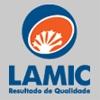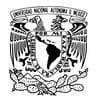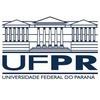Check out what is new in Animal Feed
Find the best technical articles, forums, and videos on Animal Feed at Engormix. Enter now and interact with the world's largest agricultural social network.
I. INTRODUCTION Estimating the available energy of feed ingredients is fundamental to formulating a well-balanced diet and lower the production cost. Measurement of apparent metabolisable energy (AME) is the accepted standard procedure for evaluating the available energy value of ingredients for poultry, as it is simple and straightforward and considers most of the energy losses after digestion and metabolism (Carré et...
Comments : 0
Recommendations: 0
I. INTRODUCTION Cereal grains are ground prior to feed mixing to reduce the particle size with the aim of modifying their physical characteristics. This facilitates handling, mixing and further processing (extrusion and pelleting) and increases the exposure of nutrients in the endosperm to digestive enzymes (Amerah et al., 2011). Available recommendations regarding optimum particle size are contradictory, due to...
Comments : 0
Recommendations: 1
.jpg&w=3840&q=75)

The Circular Bioeconomy and its impact on Feed Ingredients
Suggested link
Barley ranks fourth in global cereal production after corn, wheat and rice. About 65% of the world’s barley produced is fed to animals, including poultry. Australia is a significant global producer of barley, ranking in the top 5 countries with about 5% of global production and is among the top 3 barley exporters accounting for about 30% of malt and 20% of feed barley trade. Australia is a reliable supplier of two-row spring barley that is suitable for a wide range of malting, brewing...
Comments : 1
Recommendations: 1
...
Comments : 0
Recommendations: 1
INTRODUCTION The feed conversion ratio (FCR) is, in addition to the cost of the feed, the most influential variable in the cost structure of poultry production 1,2 and consequently, drives the economic efficiency of poultry operations. As a result, the FCR represents an important response variable in nutrition experiments, irrespective of whether or not they are complex, as metabolism studies 3,4 , or as simple as the experiments that are usually conducted to...
Comments : 0
Recommendations: 0
Foodborne diseases & global scenario: Up to 30% of the inhabitants in developed countries may be affected by food-borne illness each year and the problems are likely to be even more serious in developing countries. The global occurrence of food-borne disease is difficult to evaluate, but in 2005 it was projected that 22 lakhs people, including 18 lakhs children, died from diarrheal diseases(WHO,2015). Microbiological hazards represent 93% of the incidents of food-borne...
Comments : 0
Recommendations: 0
.jpg&w=3840&q=75)

The Circular Bioeconomy and its impact on Feed Ingredients
Suggested link
1. INTRODUCTION Consumer demands and the pressure of supermarket chains are changing rapidly the way eggs are produced. Enriched cages are not considered a sound alternative to improve animal welfare standards in the developed countries. Consequently, the industry is moving hens from battery cages towards alternative systems, such as deep litter and aviary barns, with or without access to an outdoor area. In addition, organic production with non-beak trimmed hens, under...
Comments : 0
Recommendations: 0
Introduction Corn (Zea mays L.) is one of the most cultivated cereals around the world. It has a relevant role in economy and society due to its high nutritional value and productive potential [1,2]. Brazil is the third major producer of corn, after the United States and China [3]. Most Brazilian states are corn producers, but the largest volume of the cereal is harvested in the mid-west, the southeast and the south regions. Considering the 2018/2019 corn harvest, the leading...
Comments : 0
Recommendations: 0
1. Introduction Mycotoxins, the secondary fungal metabolites of toxigenic species are mainly produced by the genera Aspergillus, Penicillium and Fusarium. These toxigenic species predominantly contaminate cereals during pre- and post-harvest storage and many other stages [1]. The production of mycotoxins in grains depends on several factors, including humidity, temperature, water activity, mechanical damages and fungal toxigenic potentials [2]. Based on their toxicological...
Comments : 0
Recommendations: 1
Importance of animal origin foods and trends of consumption Given their high nutrient density, animal-origin foods have been staples of the human diet along our evolutionary history. Indeed, evidence of meat and bone marrow consumption in hominins can be traced back to around 2.5-2.8 million years ago (De Heinzelin et al., 1999, Thompson et al., 2019). On the other hand, milk from ruminants was introduced into our diets more recently, at least 8500...
Comments : 0
Recommendations: 1
.jpg&w=3840&q=75)

The Circular Bioeconomy and its impact on Feed Ingredients
Suggested link
Introduction Animals used for food production have been genetically selected for feed intake and muscle development (or milk and egg production) and are therefore divergent from their ancestors. In addition, these animals are reared in conditions that favor fast spread of pathogens. The high uptake of feed and the fast growth make these animals prone to intestinal disorders, what has been neglected in the past because of the use of low doses of...
Comments : 0
Recommendations: 1
...
Comments : 0
Recommendations: 3
...
Comments : 0
Recommendations: 0
1. Introduction Salmonella spp. are major food-borne pathogens around the world. The Salmonella genus is composed by two species, S. bongori and S. enterica. Also, the latter is also composed of six subspecies: S. enterica (I), S. salamae (II), S. arizonae (IIIa), S. diarizonae (IIIb), S. houtenae (IV), and S. indica (VI) [1]. In the year 2015, S. enterica was responsible of 94,625 confirmed cases of salmonellosis and 126 deaths in the European Union (EU). Although in the last...
Comments : 0
Recommendations: 0
.jpg&w=3840&q=75)

The Circular Bioeconomy and its impact on Feed Ingredients
Suggested link
INTRODUCTION Pelleting is the most common form of thermal processing used in broiler feed manufacturing, aggregating the particles of ingredients into a cylinder by means of mechanical pressure, moisture, and temperature. A wide range of temperature and moisture can be used during conditioning, usually from 60°C to 100°C and 12 to 18% moisture (Hancock, 1992). Increase in feed intake (FI) is among the main reasons that motivate agroindustries to pellet feeds...
Comments : 0
Recommendations: 0
INTRODUCTION The physical form of the diet is a tool to improve broiler live performance, especially feed efficiency. However coarse feed particles enhance gizzard function, which was referred to as the pacemarker of gut motility (Xu et al. 2015a, Xu et al. 2015b, Kheravi et al. 2017). Studies respect to particle size impact on health, digestive efficiency and broiler performance were developed more than 60 years ago (Pacheco et al. 2014, Xu et al. 2015a, Xu et al. 2015b)....
Comments : 0
Recommendations: 1
By Fred Miller / University of Arkansas System Division of Agriculture
FAYETTEVILLE, Ark. — Arkansas Agricultural Experiment Station scientists have developed bacterial cultivation methods to isolate different bacteria from pigs. These methods could be used to culture beneficial bacteria in swine intestinal, or gut, microbiomes that can serve as probiotics to protect or improve the health of pigs.
...
Comments : 0
Recommendations: 0
Introduction: Due to the constant genetic evolution in both the production of broilers, nutritionists must constantly adapt their nutritional recommendations and feeding programs to maximize economic results at all times. These management and nutrition decisions must take into account: the animal (potential for growth), environmental conditions and the composition of the feed, which affect feed consumption and, consequently, the performance of birds. And economic...
Comments : 13
Recommendations: 11
.jpg&w=3840&q=75)

The Circular Bioeconomy and its impact on Feed Ingredients
Suggested link
Introduction Soybean [Glycine max (L.) Merr.] meal (SBM) is typically the main protein feedstuff included in livestock diets (Félix et al., 2010; Oliveira et al., 2020). After being subjected to an adequate heat treatment, SBM has a high crude protein content, as well as a high digestible energy and low fiber contents (Félix et al., 2010). In general, SBM makes up 30% of broiler diets (Duarte & Junqueira, 2013). However, broiler performance is strongly...
Comments : 0
Recommendations: 0
INTRODUCTION The inclusion of fats and oils in broiler chicken diets is a common practice because they provide essential fatty acids, improved the absorption of soluble nutrients in oil and increased the content of metabolizable energy (ME) in the diets (Hossain and Das, 2014). Feeding programs are established based on EM needs, so nutritional strategies are sought to optimize productivity considering economic and environmental aspects during the production cycle (Andreoti et...
Comments : 0
Recommendations: 0























